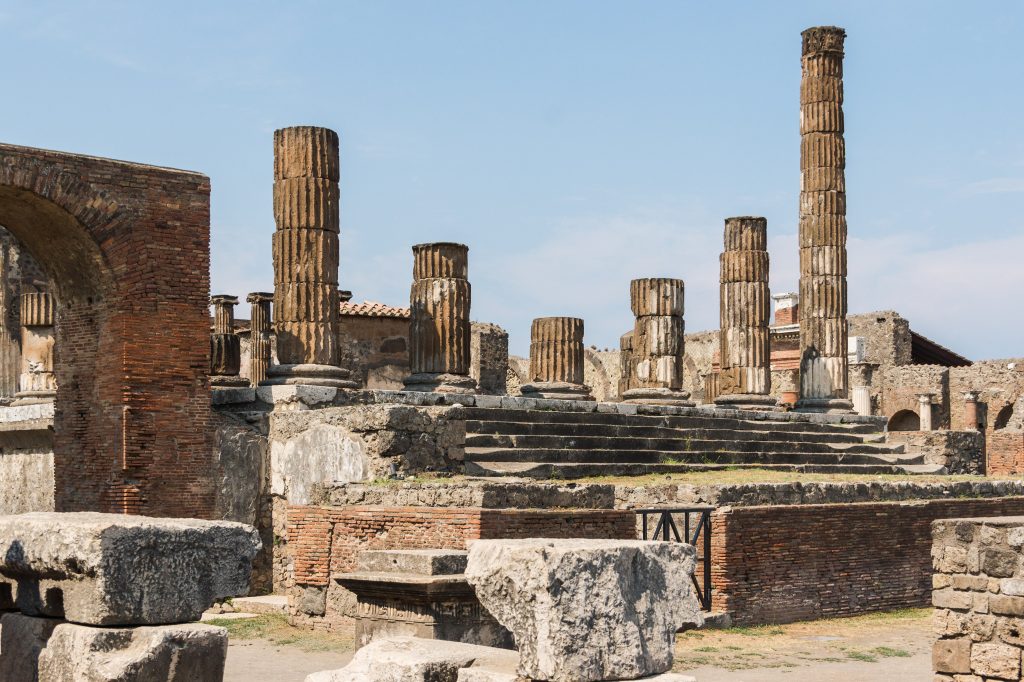There is a new exhibit at the Reagan Presidential Library on the unlucky ancient Roman city of Pompeii. Though always wanting to visit the real thing, I had to satisfy my curiosity about Pompeii not on the boot of Italy, but on the hills of Simi Valley.
Like any television addict worth his salt, I first became aware of Pompeii by watching a very old black and white movie called "The Last Days of Pompeii" on the late show. It starred a bunch of Hollywood actors that nobody remembers anymore, and it was a fairly over the top melodrama about a gladiator who converts to Christianity and then, which is the main reason I stayed up to watch it when I was 12, there’s a cool volcanic eruption that sends everything tumbling down.
Still, like the story of Titanic and anything that has to do with sharks, our morbid curiosity takes hold of us. The unsettling imagery of human bodies, or what were once human bodies now immortalized as shells of their former selves due to ash and plaster casting, puts one right in touch with one’s own mortality.
The exhibit at the Reagan Library had such examples but what struck me more than the dramatic molds of human life at the end of a great suffering, was looking at some of the everyday objects they had on display.
Fine jewelry and medical instruments were exhibited that looked like they could have come off a counter on Rodeo Drive or found in the medical kit of your family doctor. They were refined, ornate and bespeaking of an advanced civilization that was not only comfortable in its own skin, but certainly, by the look of some of the excavated architecture and furniture, seemed to bask in a certain level of luxury…by 79 A.D. standards of course.
Were there Christians in Pompeii during its heyday? I did a little research and there seems to be an ongoing debate among those in the know. Some are sure there, others equally sure there were not.
Since it is impossible to know who has an agenda one way or the other, I think it’s probably safe to assume there were. After all, St. Paul traveled around the Empire prior to Vesuvius blowing his top and I can’t imagine a busy port town like Pompeii and the nearby Herculaneum didn't have a resident or two who had not heard the good news.
But these were still dangerous times for being an overt Christian, so it makes sense they would have kept a low profile. Confronted with the full speed ahead decadence as seen in some of the Pompeii graffiti (also on display at the Reagan Library but rated X), would hopefully be another sign that followers of Jesus would not have felt all that comfortable in the confines of Pompeii.
When you view the artifacts and the examples of daily life in this city, you can’t help but compare it to today. Like Pompeii in 79 A.D. we are also kind of full of ourselves. We too believe we can control nature, keep the seas from rising as if we were the Persian Emperor Xerxes who ordered his soldiers to “beat” the ocean for the storm it formed that took out the bridge at Hellespont he was planning on using to invade Greece. Our popular culture is also similar with a pretty much anything goes view of just about anything.
We, like the people of Pompeii, build monuments and statues of all kinds aimed at leaving our mark, making sure those who come after us know we were here. Which made learning at the library exhibit that ten years after the cataclysmic eruption, people forget there ever was a place called Pompeii altogether. It lay dormant for some fifteen hundred years before someone stumbled up on it and excavations began.
Lastly and sadly, the Church was damaged goods in both eras. At least in Pompeii the Church was actively repressed, oppressed and persecuted. In our time, most of our wounds are self- inflicted. If there’s a lesson to be learned looking at the fine art of two thousand years ago and then the ash-created molds of human beings who were living their lives without a thought about the end of their world, well, you get the picture.
Robert Brennan is a weekly columnist for Angelus online and in print. He has written for many Catholic publications, including National Catholic Register and Our Sunday Visitor. He spent 25 years as a television writer, and is currently the Director of Communications for the Salvation Army California South Division.
Start your day with Always Forward, our award-winning e-newsletter. Get this smart, handpicked selection of the day’s top news, analysis, and opinion, delivered to your inbox. Sign up absolutely free today!

